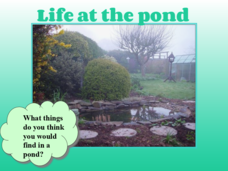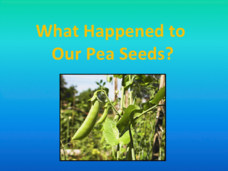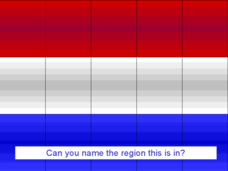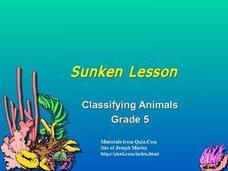Biology Junction
Phylum Porifera – The Sponges
They may not look like it, but sponges are living, breathing creatures! A PowerPoint presentation explains the important characteristics of the invertebrate Phylum Porifera, or more commonly known as the sponges. From their body...
Curated OER
Understanding Chemical Reactions Lesson: Bonds and Energy
What is required to get a chemical reaction? Chemistry learners find out by viewing this slide show. They will be able to compare endothermic and exothermic reactions, as well as draw energy level diagrams for each. A lab activity is...
Curated OER
Frog Life Cycle
Take a look at these amazing photographs and start a class discussion of the life cycle of a frog. Mrs. Frog introduces her babies and asks learners what they are called. They will view the process by which her babies change into...
Curated OER
Electrical Safety
A summary of electric charge and its flow along a conductor starts this PowerPoint. The differences between batteries and supply from a power station are detailed and a group of slides that ask questions of your students and then give...
Curated OER
Using Ionising Radiation in Medicine
This is an information-intense presentation for any science class you might be teaching that will study ionising radiation. The material is specific to cancer diagnosis and treatment, and one of the forty-two slides also touches on using...
Kenan Fellows
Use of Dichotomous Keys to Identify Stream Organisms
What kind of organisms are living in the stream? After an explanation on how to use a dichotomous key, groups of three to four use the keys to identify macroinvertebrates from a local freshwater stream. Using the the concept of...
Curated OER
Aircraft
A variety of concepts are covered in this PowerPoint which gives the main engineering points of different aircraft types. Each slide details the engineering behind non-rigid and rigid categories of lighter or non-lighter than air...
Curated OER
Taxonomy
Biology novices name the seven levels of classification and use binomial nomenclature for naming living organisms. The first half of this presentation bestows a brief history of taxonomy, while the second half instructs on how to use our...
Curated OER
Ants
Ants are a common example to use when conducting lessons on insects, and if your youngsters are squeamish, this is a way to introduce them without actually bringing them into the classroom! Viewers of this PowerPoint learn about the...
Curated OER
Earth Materials Module
This slide show progresses through a comprehensive review of the grounding principles of earth science. Get down and dirty with the details of fossil fuels! Help your geologists to have a rock solid understanding of the rock cycle. The...
Curated OER
DNA Transcription & Protein Translation
Your honors or college-level biologists will appreciate how protein synthesis is presented in this PowerPoint. Steps of DNA transcription and diagrams are included to teach them about this vital concept. Use this to follow lessons about...
Primary Resources
What Plants Need to Grow
What do seeds need in order to grow into plants? This presentation follows what happened every four days during a seed growth and observation study. Images compare how well two sets of seeds did under specific circumstances. Use this to...
Curated OER
Are You the Bug or the Windshield
A fun slide show which illustrates different size bugs hitting car windshields. Your junior highers should be amused while they learn the relationships between mass, velocity, and force of an impact. Scientific terminology is used, but...
Curated OER
Waves: Sound and Light
A few definitions related to waves open this slide show. Note that the information only covers light waves even though the title mentions sound. Correct the title before using this resource. Another mention is a set of photos of a class...
Curated OER
Group 15, The Nitrogen Group
This short presentation provides a convenient introduction to the nitrogen group in the periodic table of elements. A graphic displays where they are placed in the periodic table. The nitrogen cycle is mentioned and ammonia is explained....
Curated OER
Metals in Industry, Working with Metals
How is iron is extracted from it ore and then combined with other materials to produce steel? That question is answered in the presentation. Also covered is how titanium and aluminum are used in manufacturing. This is a compact lesson...
Curated OER
Respiration
This series opens with diagrams of experimental setups. A data table is displayed and questions are asked, indicating that the intent is for lab groups to perform the depicted experiments. At slide twelve, a coherent lesson about the...
Curated OER
The Chemistry of Life
After studying the different aspects of atoms and their reactivity, pupils will find this summary PowerPoint useful for review. Some of the slides are informative with labeled diagrams; others give important vocabulary. Teachers may want...
Curated OER
The Everglades
Can your students recognize the Everglades? Test their knowledge with this puzzling PowerPoint. A photo of the Everglades is slowly uncovered as you flip through the slides. Tip: Use this as a hook prior to a new lesson!
Curated OER
The Gardener
Here is one of the better presentations I've come across! This one uses the book, The Gardener to help learners enter the world of creative writing while learning a whole lot about the world of gardening. This fantastic PowerPoint...
Curated OER
Sunken Lesson: Classifying Animals
This PowerPoint features vocabulary and key concepts related to animal classification. Information about levels of classification, traits common to vertebrates and invertebrates, and a description of metamorphosis are included. The text...
Curated OER
Sunken Lesson: Animal Growth and Heredity Grade 5
This animal growth PowerPoint includes bulleted text organized into categories including cell division, mitosis, regeneration, sexual and asexual reproduction, life cycles, metamorphosis, and inherited traits. Diagrams are included in...
Curated OER
Ideal Gas Law
Young chemists get a handle on the behavior of gases when viewing this presentation. It incorporates thorough explanations of the ideal gas law, molar mass, empirical formulas, and partial pressures. A highlight is the learning check...
Teacher Web
Archaebacteria and Eubacteria
Take young biologists back to the beginning of life on Earth with this presentation on bacteria. Examining the different classifications of bacteria, this presentation introduces young scientists to the concepts of autotrophs and...

























